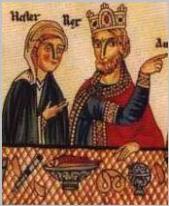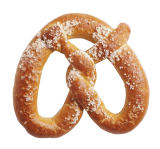 The official seal of Amsterdam shows a little ship (a kogge or cog) with two knights and a dog. According to a medieval story, the two men were caught by a storm, prayed to be saved, and decided to stay on the place where they landed. The three banners you see show a second heraldic symbol: this is the emblem of the lords of Aemstel, the noblemen who were responsible for the country along the river Amstel.
The official seal of Amsterdam shows a little ship (a kogge or cog) with two knights and a dog. According to a medieval story, the two men were caught by a storm, prayed to be saved, and decided to stay on the place where they landed. The three banners you see show a second heraldic symbol: this is the emblem of the lords of Aemstel, the noblemen who were responsible for the country along the river Amstel.
Once, they had been servants (ministeriales) of the bishop of Utrecht, but they attempted to become independent, were forced into vassalage by the count of Holland, and were ultimately expelled to Brabant, where the family lives to the present day. On this seal, the shield of the white knight has the weapon of Holland.
Although the castle of the lords of Amstel was a little upstream, at Ouderkerk, they cared about the town at the mouth of the river as well. Before 1275, they built a dam, which is commemorated in the name of the city: Amsterdam does -as you already suspected- indeed mean “dam in the Amstel”. The city still uses the three crosses of the Van Aemstel family. This is the office of the Old West Municipal District.
































